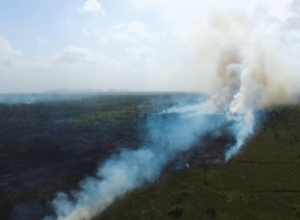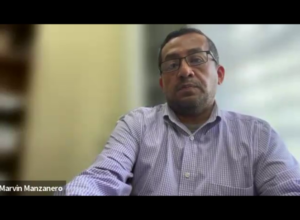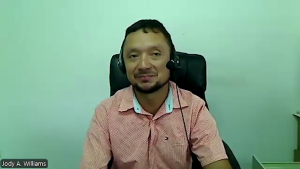Air Quality is Critical in Toledo and Cayo Due to Wildfire
Wildfires continue to burn through parts of Toledo and Cayo districts. Tonight, the Ministry of Health and Wellness and the Department of Environment are advising residents living in the affected areas to stay indoors, keep their windows and doors closed and wear masks. A joint press release says that the air quality in Toledo and Cayo districts has significantly decreased. Wildfires have led to substantial air pollution. So, not only are some residents working overtime to safeguard their livelihood, but they must also now contend with the air they breathe to protect their very lives. News Five’s Paul Lopez takes a closer look at the situation. Here is that report.
Paul Lopez, Reporting
Wildfires have been burning for the past three weeks in Toledo and Cayo Districts. These fires pose a threat to the livelihood of residents in these areas. And now, another concern has arisen, emanating from the wildfires. That is air pollution. It is a concern raised by Orlando Habet, the Minister of Sustainable Development, during a media tour of Mountain Pine Ridge last week.

Orlando Habet
Orlando Habet, Minister of Sustainable Development
“You see what happened in San Ignacio and Santa Elena in the past week. The air quality is really bad and you can’t come out on the verandah, jog or exercise, do your bicycling because it is terrible.”
These social media images and videos capture some of what residents in the Cayo District have been experiencing. The blanket of haze in the sky, stretching for miles, is smoke from wildfire. In Toledo District it is no different. Residents are left with no choice but to inhale this contaminated air.

Voice of: Blue Creek Village Resident
Voice of: Blue Creek Village Resident
“I think this is the worst I have seen it and a couple days ago here in the village the smoke was really intense, intense to the point that I was worried about the kids and the elders in our community, because this is not normal.”
 Voice of: Santa Cruz Resident
Voice of: Santa Cruz Resident
“I believe yes, it is the worst fire I have seen around this time here, because it gets really, really, smokey around here and just recently that side was burning day and night and all the smoke was coming this side. Sometimes I have to move from here and go to my parent’s house to spend the night sometime just so that the kids are safe and off the heavy smoke.”
 On Monday, the Ministry of Health and Wellness and the Department of Environment warned the public that the substantial increase in air pollution due to smoke can lead to health risks for the vulnerable population. This index describes air quality and its associated health effects. The higher the number, the more air pollution is being inhaled. Anything beyond a numeric value of one hundred is unhealthy, all the way up to three hundred where the air pollution becomes hazardous. On Sunday, for example, the air quality in San Jose Succotz was at one hundred and seventy-five. That is where internist and bioethicist, Doctor Marvin Manzanero resides.
On Monday, the Ministry of Health and Wellness and the Department of Environment warned the public that the substantial increase in air pollution due to smoke can lead to health risks for the vulnerable population. This index describes air quality and its associated health effects. The higher the number, the more air pollution is being inhaled. Anything beyond a numeric value of one hundred is unhealthy, all the way up to three hundred where the air pollution becomes hazardous. On Sunday, for example, the air quality in San Jose Succotz was at one hundred and seventy-five. That is where internist and bioethicist, Doctor Marvin Manzanero resides.

Dr. Marvin Manzanero
Dr. Marvin Manzanero, Internist and Bioethicist
“And when you look at air quality monitors, the particular situation that they look for is P.M., particulate matter. Two point five micrometers is what will get lodged all the way deep into your lungs. Those are particles that we will never see. Who is at risk then? Just like most other deceases, it is the most vulnerable. So, we are going to have the elderly population, young children, people who have underlying conditions, asthmatics, people who have chronic obstructive pulmonary decease, people who have hypertension and diabetes. There has been links to those not doing so well, people who have cancer, people who are on steroids and other types of immunosuppressants. One thing we ought to highlight is that the WHO recently released its global report and air pollutants have been shown to be the trigger of the building up of plaque in your arteries, so microparticles and even nano plastics are being found in those arteries that are building up in your circulatory walls.”
 One of the measures recommended by healthcare providers to limit the risks associated with inhaling air pollution is the use of protective respiratory masks. Additionally, individuals living in the affected areas are being advised to limit outdoor exposure. This also includes children attending school.
One of the measures recommended by healthcare providers to limit the risks associated with inhaling air pollution is the use of protective respiratory masks. Additionally, individuals living in the affected areas are being advised to limit outdoor exposure. This also includes children attending school.

Dr. Marvin Manzanero
“If you have to be outside, wear protective respiratory mask or you try to limit the amount of time you are going to be outside. Even with exercise, I have mentioned it to some colleagues, you really cant be doing strenuous activities when you have so much air pollutants in the air. Even on a person’s note, two weeks ago I tried running and started wheezing after one point five miles. So, exercise had to be cut short because you are inhaling too many pollutants. For example I have two teens and one of the ones that is a little more active I have to limit his outside exposure. They do go to school. They don’t do physical activity in school these days, but as soon as they come home they are in an indoor environment.”
Reporting for News Five, I am Paul Lopez.







Facebook Comments